The Skillful Craftsmen in Lingnan · The Guardians of Ancient Buildings | Manchurian Windows, Eyes of Lingnan Buildings
人们常说,眼睛是心灵之窗。对岭南古建筑而言,反之也成立,满洲窗是建筑之眼。
As the saying goes, eyes are the windows to the human soul. As for the ancient architecture in Lingnan, the opposite saying is also true: Manchurian windows are the eyes of buildings.
这双眼最能代表岭南气韵——作为岭南建筑中独具特色的装饰艺术,中式木制花格嵌套彩色玻璃蚀刻画的中西结合,体现岭南文化包容、融合、创新的精神内涵。
This pair of eyes can represent the artistic conception of Lingnan. Manchurian window is a kind of unique decorative art in Lingnan architecture. It integrates Chinese and Western cultures by adopting Chinese wooden latticework embedded with colored glass etchings, thus embodying the spiritual connotation of inclusiveness, integration and innovation in Lingnan culture.
遗憾的是,今天这样的眼越来越难觅。近日,记者走近广州为数不多的两位满洲窗修复制作匠人,看看在他们的巧手之下,岭南建筑的这双眼如何再次焕发迷人的光彩。
Unfortunately, it’s becoming increasingly difficult for us to find such eyes nowadays. Recently, our journalists interviewed two of the few Manchurian window restorers and makers in Guangzhou to see how this pair of eyes of Lingnan buildings shines again via their dexterous hands.
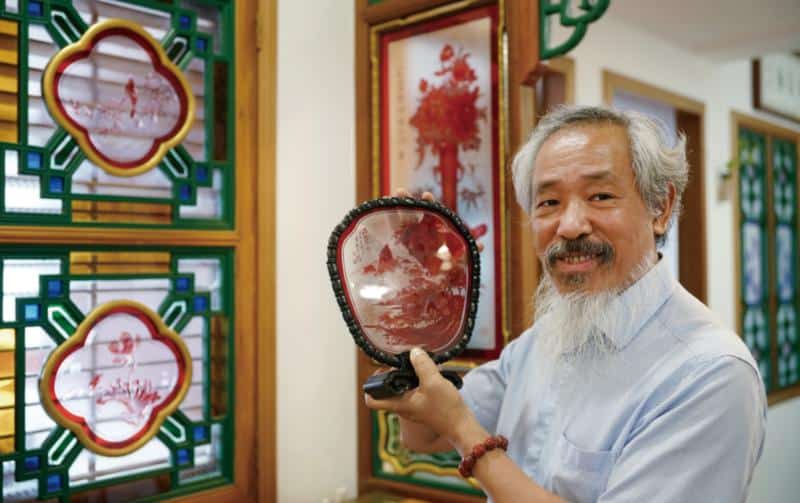
陈家祠附近的芦荻街是闹中取静的西关老城区,任斌强的家就在这里。他除了是广州市书法家协会副主席外,还有另一个少为人知的身份——一位从事了十多年满洲窗制作的能工巧匠。
Ludi Street near Chen Ancestral Temple is the quiet old Xiguan town in a noisy city, where Binqiang’s home is located. In addition to the vice chairman of Guangzhou Calligrapher’s Association, Mr. Ren has another lesser-known identity, a skilled artisan who has been engaged in Manchurian window fabrication for over one decade.
书画、广彩瓷、满洲窗填满任斌强的居住空间,也组成了他的大半辈子。62岁的任斌强从15岁起师从岭南书画名家连登,学习中国书画,40多年不辍,有着深厚的国画功底和艺术造诣。“1976年开始做广彩,1996年在增城专做出口广彩瓷,2003年开始做满洲窗。”他说。
Painting, Guangcai porcelain and Manchurian windows filled Mr. Ren’s living space and constituted most of his life. 62-year-old Ren Binqiang began learning Chinese painting and calligraphy at the age of 15 from Lian Deng, a prestige painter in Lingnan. Mr. Ren has kept working hard for over 40 years and accumulated profound Chinese painting skills and artistic attainments. “I started making Guangcai porcelain in 1976, was dedicated to Guangcai porcelain for export in Zengcheng in 1996, and then began fabricating Manchurian windows in 2003.” Mr. Ren said.
与传统工匠制作的图样不同,作为书画家的任斌强追求的是尽可能在玻璃上呈现国画的细腻。“以前分工比较细,画师出图,工匠依图样做,创造性上会比较欠缺。”任斌强既精通国画,又掌握蚀刻工艺,因而他手下的画芯,往往艺术水平更高。
Different from the patterns made by traditional craftsmen, Mr. Ren, a calligrapher and painter, pursues the delicacy of traditional Chinese paintings on glass to their fullest extent. “The previous division of labor was much segmented, with painters painting and craftsmen processing the glass according to the patterns. As a result, there was not that much creativity.” Mr. Ren is not only proficient in traditional Chinese painting but also masters the etching skills. Therefore, his window patterns are often of higher artistic level.
从书画家到满洲窗制作,任斌强说,他更多的是玩的心态,为愉悦自己。“玩”字背后是“会玩”“愿玩”。“愿玩”则出自他想把这项工艺保存下去的使命感。出了岭南,广式满洲窗就看不到了,但很少有人愿意去做。看着这项岭南独门技艺即将湮没无闻,我就想试着把这项工艺保存下去。”任斌强说,“手艺这个东西,就像一件‘破棉袄’,没有那么光鲜,但起码可以遮风保暖。”
According to Mr. Ren, he has developed more of a playful mentality to amuse himself from painting and calligraphy to Manchurian window fabrication. Behind the word “play” are phrases “able to play” and “willing to play”. The phrase “willing to play” stems from his sense of mission to preserve this art form. There is no trace of Cantonese Manchurian windows outside Lingnan. It’s such a classical art form but few people are willing to engage in this art now. “Seeing this unique technique in Lingnan on the rope, I plan to try preserving it.” Mr. Ren said, “Craftsmanship works like a ‘worn-out cotton-padded cloth’. It may look shabby but at least can keep us away from cold wind.”
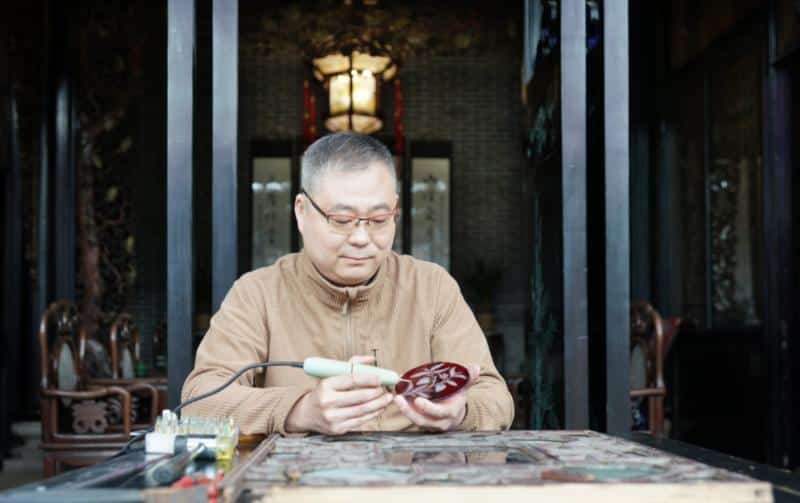
在距离泮溪酒家36公里远的番禺南村镇,有一座有着150年历史的岭南古园林,它就是广东四大名园之一的余荫山房。
Yuyin Shanfang is an ancient Lingnan garden with a history of 150 years and one of the four famous gardens in Guangdong. The garden is located in Nancun Town of Panyu and 36 kilometers away from Panxi Restaurant.
正是在吴广标团队巧手之下,余荫山房这座古园林之窗焕发出新的光彩。如今由吴广标团队制作的“蝶恋花”“木棉花”满洲窗已成为瑜园的新景点。当阳光穿过厅堂,室内光影交错,美轮美奂,很多游人被投影在屋内地面、墙面上五彩斑斓的光影所吸引,而这正是满洲窗的魅力所在。
It is by virtue of the exquisite crafts of Wu Guangbiao’s team that Yuyin Shanfang, a window of ancient gardens, thrives with new brilliance. Now, “Butterfly Flower”, “Kapok” and other Manchurian windows fabricated by Wu Guangbiao’s team have become new attractions in Yu Garden. As the sun shines through the hall, the sunlight and the shadows blends with each other, creating a splendid atmosphere. Many visitors are attracted by the colorful light and shadows projected on the floor and walls inside the house. That is where the charm of Manchurian windows lie.
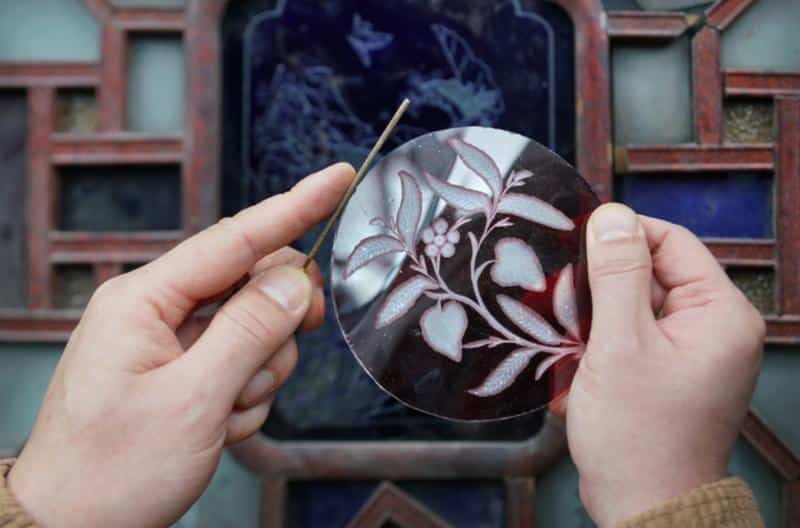

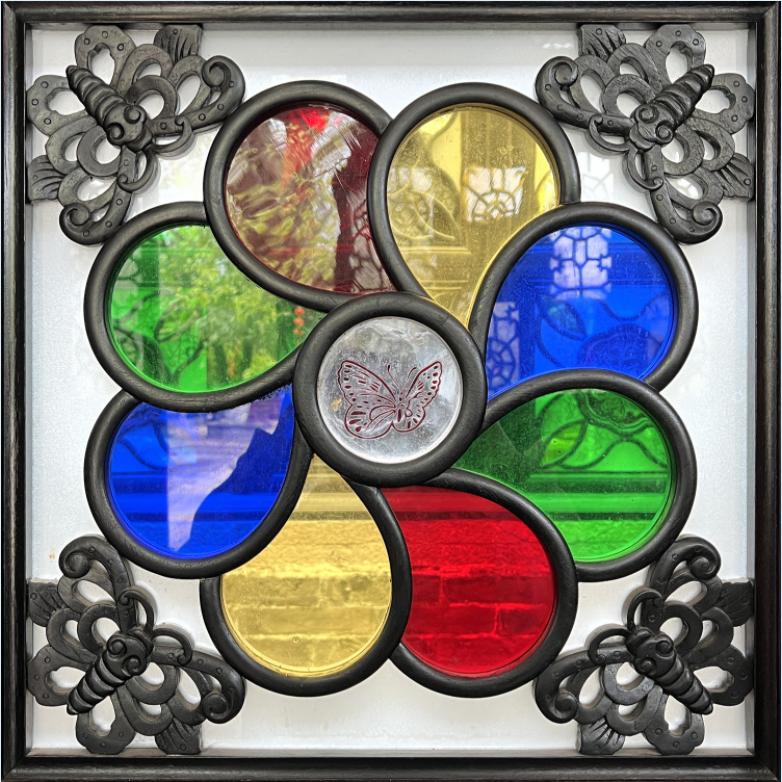
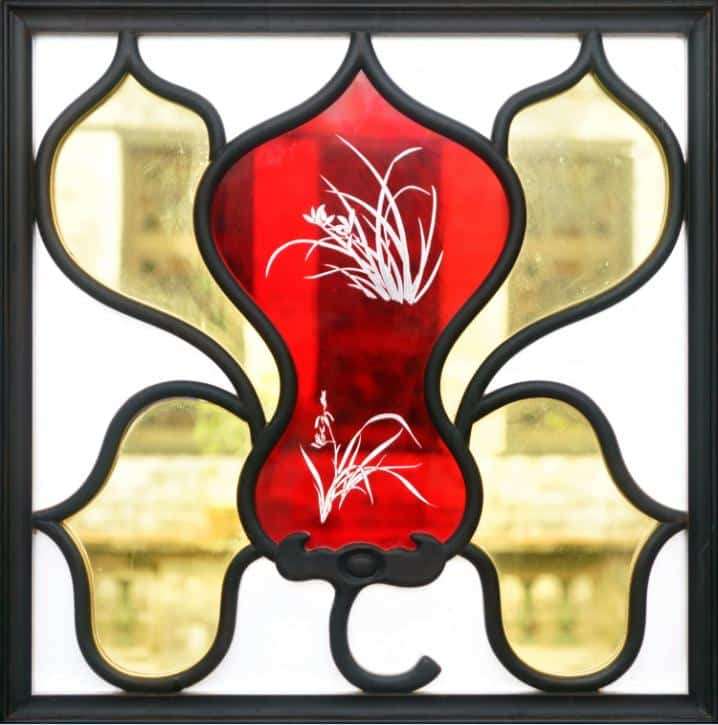
与余荫山房结缘的这一次满洲窗修复项目,也让吴广标更深刻地理解了尊重传统的价值,“尊重传统,才能让满洲窗焕发生命力。”
The Manchurian window restoration project, which has connected Mr. Wu and Yuyin Shanfang, allows him to have an in-depth understanding of the value to respect traditions. In his opinion, “Only by respecting traditions, can we endow Manchurian windows with vitality.”
满洲窗作为中西合璧的产物,自19世纪便受到富商们喜爱,从西关荔枝湾一带开始流行。19世纪至今,广州越来越多设计者将满洲窗融入于设计当中,如广州博物馆、白天鹅宾馆等。省文物保护专家委员会委员欧阳仑认为,满洲窗制作修复匠人要创新,要理解满洲窗的来龙去脉、造型艺术、设计美学等,这样才能更好地创新。
Manchurian windows, the product of integration between Chinese and Western cultures, have been cherished by wealthy merchants since the 19th century and become popular in Litchi Bay of Xiguan. Since the 19th century, an increasing number of designers in Guangzhou have integrated Manchurian windows into their designs, such as Guangzhou Museum and White Swan Hotel. Manchurian window restoration and fabrication artisans need to innovate and understand the entire history, plastic arts, design aesthetics, etc. of this art form in order to create new and better works, according to Ouyang Lun, a member of the Committee of Experts for the Preservation of Cultural Relics in Guangdong Province.
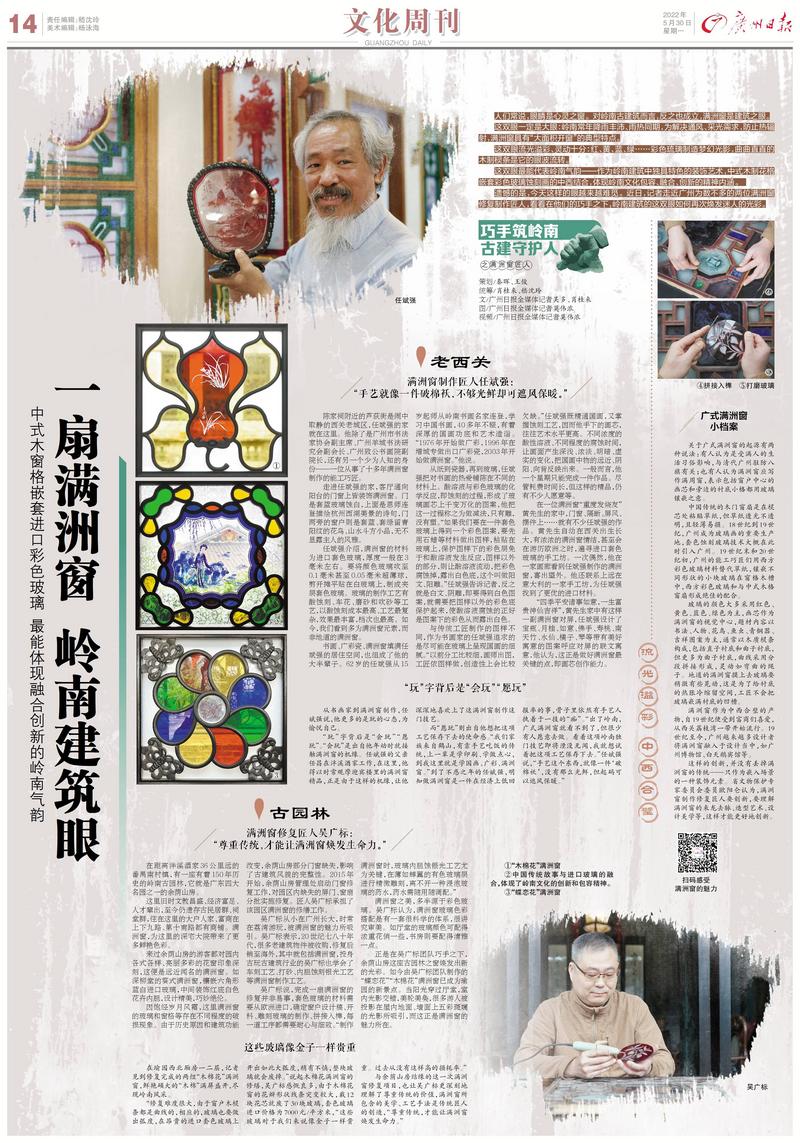
来源:广州日报
Source: Guangzhou Daily
统筹/秦晖 肖桂来
Report planning: Qin Hui and Xiao Guilai
作者:吴多、肖桂来、莫伟浓
Author:Wu Duo , Xiao Guilai and Mo Weinong











